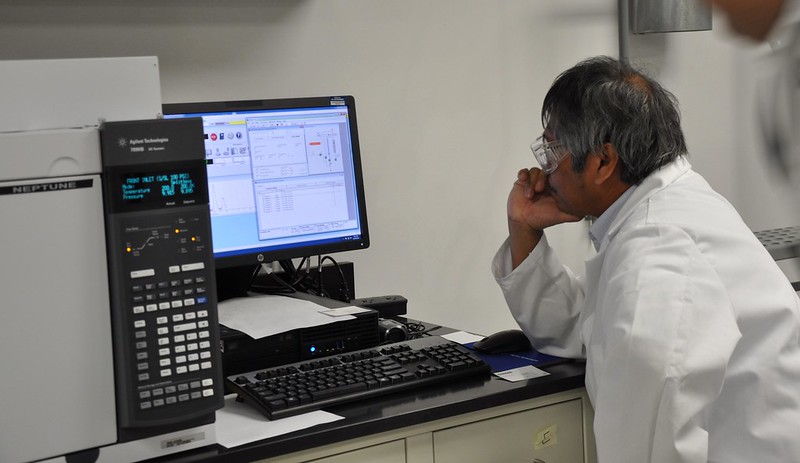Molecular Devices’ FLIPR calcium assay kits offer a direct, simple, and automation-ready assay for cell-based calcium mobilisation screening at high throughput levels. These kits use phenolsulphonephthalein dye that forms a stable colour complex specifically with free calcium ions to provide accurate results. Read on to learn more about the calcium assay kit.

Fluo-4 Dye
Fluo-4 is a green fluorescent calcium indicator suitable for use in high-throughput screening of cell surface receptors or calcium-permeable ion channels. Supplied as a cell-permeable acetoxymethyl ester (Fluo-4 AM), it cleaves within cells to release free fluorescent dye, offering superior dynamic range, loading capacity, and brightness when used at equivalent concentrations compared to Oregon Green BAPTA-1.
Fluo-4 differs from other indicator dyes by being fixed in situ with EDC or EDAC for immunofluorescence studies; this feature makes confocal microscopy possible.
This kit contains the exclusive Neuro Background Suppressor, which effectively inhibits baseline autofluorescence in neuronal cells. This solution should be added to cell culture medium prior to administering Fluo-4, as it will significantly decrease background signal and allow for shorter loading times, increasing the signal-to-noise ratio of stimulated cells while simultaneously decreasing dye efflux from them, potentially decreasing any potential toxicity issues.
PowerLoad Concentrate
The PowerLoad Concentrate is an optimised formulation of nonionic Pluronic surfactant polyols to aid in dispersing and loading AM ester dyes used in fluorescent ion indicators such as Fluo-4, Fura-2, Indo-1, SBFI, and PBFI fluorescent indicators. Additionally, it assists dye loading into cells by blocking efflux pumps that actively expel AM esters from cell membranes; when combined with water-soluble probenecid, it significantly enhances dye loading efficiency and retention into both unencapsulated and encapsulated S. pneumoniae to enable measurement of intracellular Ca2+, K+, and H+ concentrations by fluorescent detection plate readers.
Prepare 1 ml of 2x Loading Buffer as described above, adding 8 ml of mid-log phase bacteria and 40 ul of PowerLoad, followed by 900 ul of probenecid. Vortex briefly to mix. Incubate at 30 °C for 40 minutes without light exposure.
Neuro Background Suppressor
The Neuro Background Suppressor reduces background fluorescence from cellular proteins and media components that reduce assay sensitivity, such as proteins produced from live cell imaging assays. It’s ideal for use with green-emitting fluorescent ion indicators like MitoTracker(r) Green FM #9074 and LysoTracker(r) Green DND-26 #8783 to significantly enhance image quality in live cell imaging assays by eliminating background signal and increasing the signal-to-noise ratio of your assay. Just add directly prior to imaging; no medium removal is required or cell loss! Furthermore, it does not influence cell toxicity or staining either!
Probenecid
Probenecid (also known as probalan) is an antigout drug that works by increasing urine uric acid excretion, thus decreasing elevated blood levels of uric acid. This helps relieve symptoms associated with gout while protecting joints and tissues against damage from crystal-forming conditions that form over time.
As part of its current formulations, BD’s calcium assay kits were evaluated against their previous kit formulations and commercially available homogeneous calcium assay kits using multiple cell lines and receptors (e.g., a2b receptor, DRD5 receptor, CRF2 receptor, glucagon receptor, secretin receptor, and muscarinic receptor) during development and evaluation; testing showed that their new formulations did not significantly interfere with performance when compared to these other systems in terms of both sensitivity and specificity.
Organic anion transporters in cells will sometimes extrude dyes through leakage channels back into extracellular solutions, creating interference. To combat this effect, an inhibitor of nonspecific anion transporters such as probenecid should be included with dye-loading solutions when cells are loaded with calcium indicators.



